Polish Zapiekanka
The 1970s were lean times in Poland. Wages stagnated while the price of food and other basic goods–prices that were fixed by the government–rose, and rose again, sparking protests, labor strikes and civil unrest. Zapiekanka is a street food that arose in Poland during this time.
Comprised of simple and cheap ingredients–half a baguette, mushrooms, and cheese, toasted to melt the cheese and slathered with ketchup–Zapiekanka is sometimes called “Polish Pizza,” or just pizza bread. The name, a form of the word zapiekać meaning to roast or bake something until browned and bubbling like a casserole, might actually be loosely translated to another more familiar term–toastie.
It was a popular, cheap, and innovative way for small food vendors to present something akin to a pizza with minimal investment. Though their popularity waned after Poland transitioned from Soviet communism to democracy and a market economy, they still remained a common snack and have recently experienced something of a hipster revival in Poland.
Zapiekanka first came to my attention 6 years ago this month. My friend Matt discovered it while on an epic crawl of Polish nightclubs on the northwest side of Chicago, and naturally wrote about the experience on the foodie website LTHForum. I’d been looking forward to reaching the end of the List for some time, and when I saw Matt a couple months ago, I asked him if he’d go on another Zapiekanka crawl with me come April. He seemed as excited by the prospect as I was.
Unfortunately it was not to be. Restaurants and bars in the state of Illinois are currently on lockdown in an attempt to discourage public gathering and slow the spread of the current COVID-19 pandemic. “Non-essential” businesses are closed, and excessive or unnecessary trips even to businesses deemed essential are discouraged. Many grocery stores and delis are instituting a cap on the number of customers who can enter the business at once, and have lines out their doors and around their buildings where people wait, at marked 6 foot intervals, for someone to leave the store so they can enter.

So it was on a recent trip to Lassak Delicatessen, a Polish grocery and deli in southwest suburban Palos Heights, though the line was not terribly long and I was able to get in and out relatively quickly. The deli counter, festooned with smoked meats and bursting with various hams and cheeses, dominates the entrance to Lassak, with a shelf full of baked goods facing it–a sandwich-maker’s delight.

Kielbasa from Lassak 
Blini from Lassak 
Chicken Kiev from Lassak 
Lake trout from Lassak 
“Meat dumplings” from Lassak
And while I did make a stop at the deli counter, it was the counter past it, where a variety of prepared foods are sold, that held my interest on this trip. I had arrived just moments too early for Zapiekanka, but by the time I’d ordered dumplings, blini, chicken Kiev, and a few other tasty things, the Zapiekanka had been delivered to the warming tray.
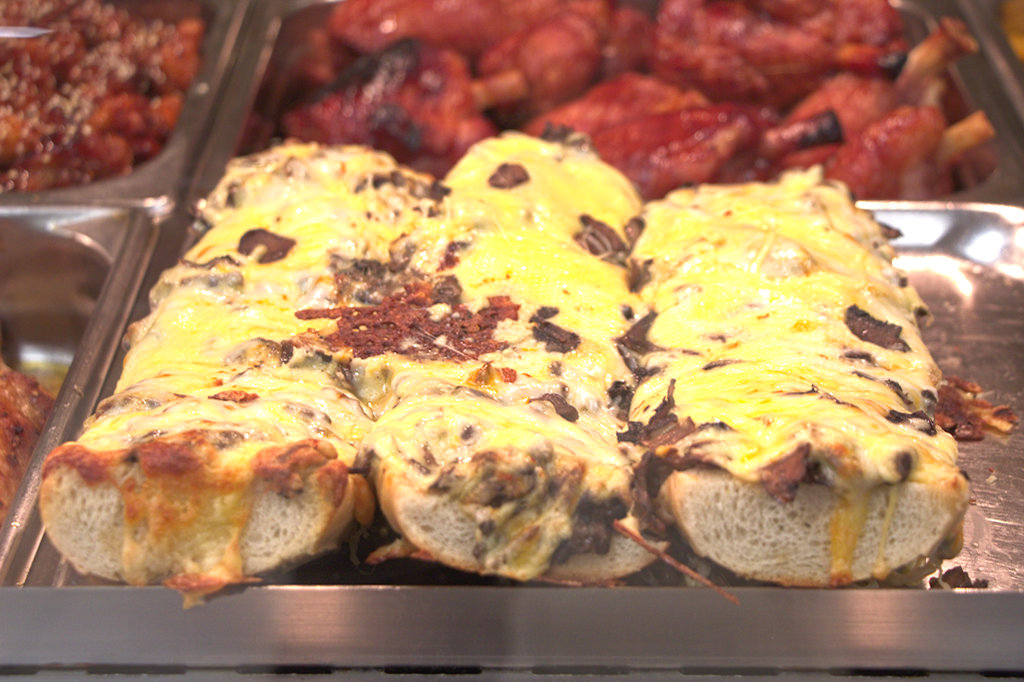
While a variety of Zapiekanka variants exist, the Lassak Zapiekanka is quite basic–mushrooms and cheese, melted on a thick, soft, and only slightly crusty baguette. To top the Zapiekanka, since I am not a fan of the typical American sweet style of ketchup, I selected a “hot” Polish ketchup–not particularly spicy per se but zesty and vinegar-forward, much less sweet than what I’m used to. Near it on the shelf was an intriguing looking “Sos Czosnkowy” or garlic sauce, which turned out to be a very slightly sweet and garlicky aioli.
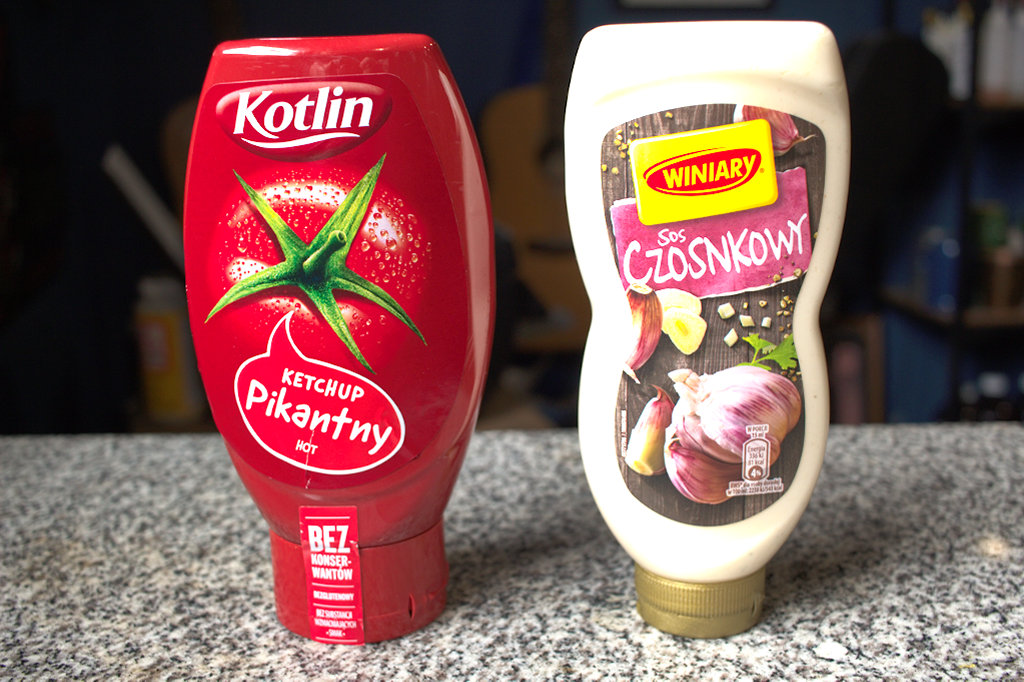
The 20 minute drive home from Lassak meant that the Zapiekanki needed to be refreshed quickly under the broiler before being consumed. I tried mine with both the hot ketchup and the garlic sauce.
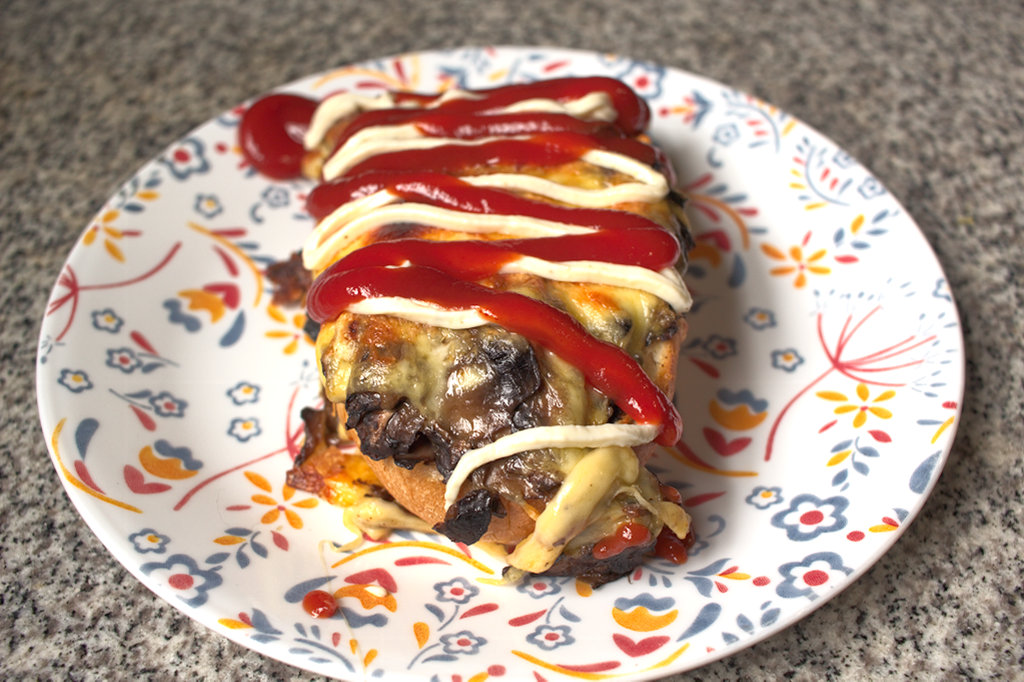
It was quite good, with or without the ketchup. Sauteed mushrooms, a mild stretchy cheese which may or may not have been mozzarella, and a soft-crumbed bread with a slightly crisp crust. On its own, it would be a tasty, cheesy snack. The ketchup is what makes it somewhat pizza-like. I don’t know how an American ketchup would change things, but the Polish ketchup is quite savory, and that along with the slight hit of spice (and perhaps aided by the garlic sauce in this case) more than compensated for the lack of a standard pizza sauce’s herbs.
Zimne Piwo

You know, I just couldn’t get the idea of the Polish nightclub crawl and Zapiekanka tasting out of my head. And while I might not be able to actually recreate that setting, maybe I could try to at least capture the essence of it, a night spent drinking Polish beers, trying various Zapiekanki, talking about them with friends…
Right. Friends were out. I’d have to recruit my family. First, though, a mission of acquisition. Back to the deli!
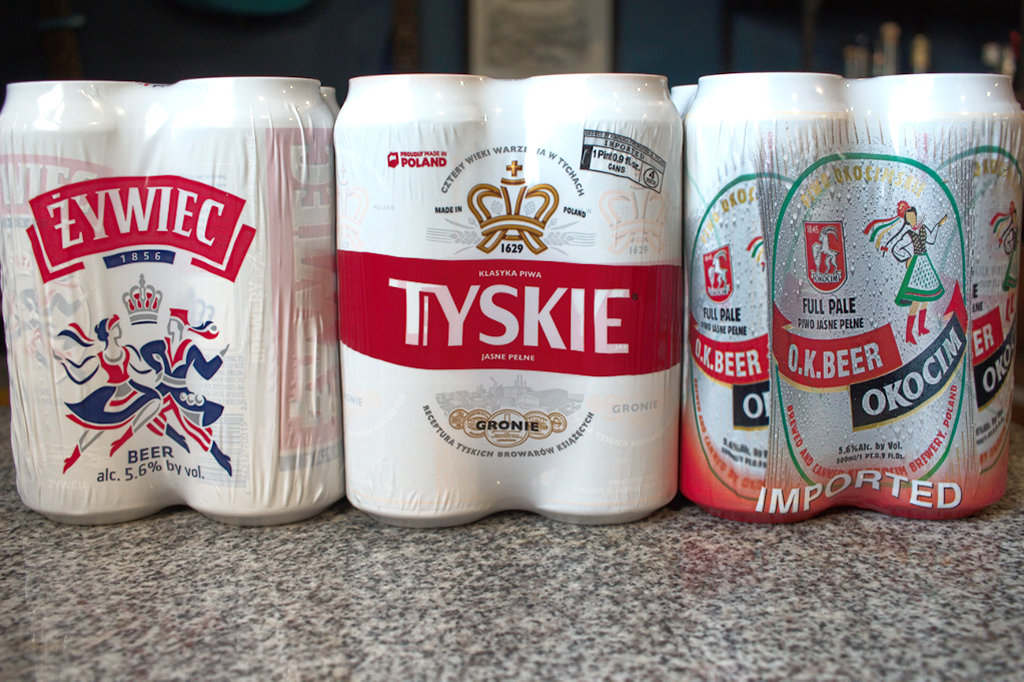
These are, or so I understand, the holy trinity of Polish beers. There’s Tyskie, everybody’s favorite. Okocim is the approachable one. Then there’s Zywiec. If Okocim and Tyskie haven’t finished you, Zywiec will.
I picked up one of the thick, plush baguettes they used for Zapiekanka at Lassak. I also stopped by the Breadsmith bakery not too far from Lassak and got a more traditional French style baguette.

French baguette from Breadsmith 
Baguette from Lassak
According to most sources, plain white button mushrooms are the mushrooms of choice for Zapiekanka. My local often has some nice Crimini available though, so I opted to use a roughly 50/50 mix of the two.
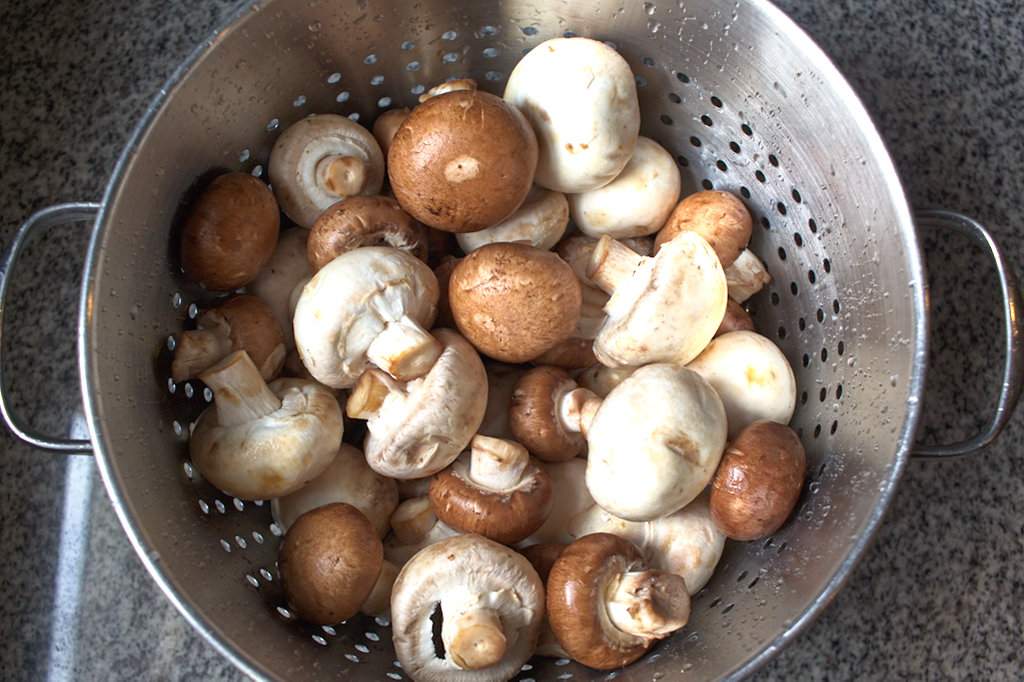
I bought some ham, which is a common addition to Zapiekanka, and still had some of the kielbasa left from my previous trip to Lassak. I even bought Polish butter.
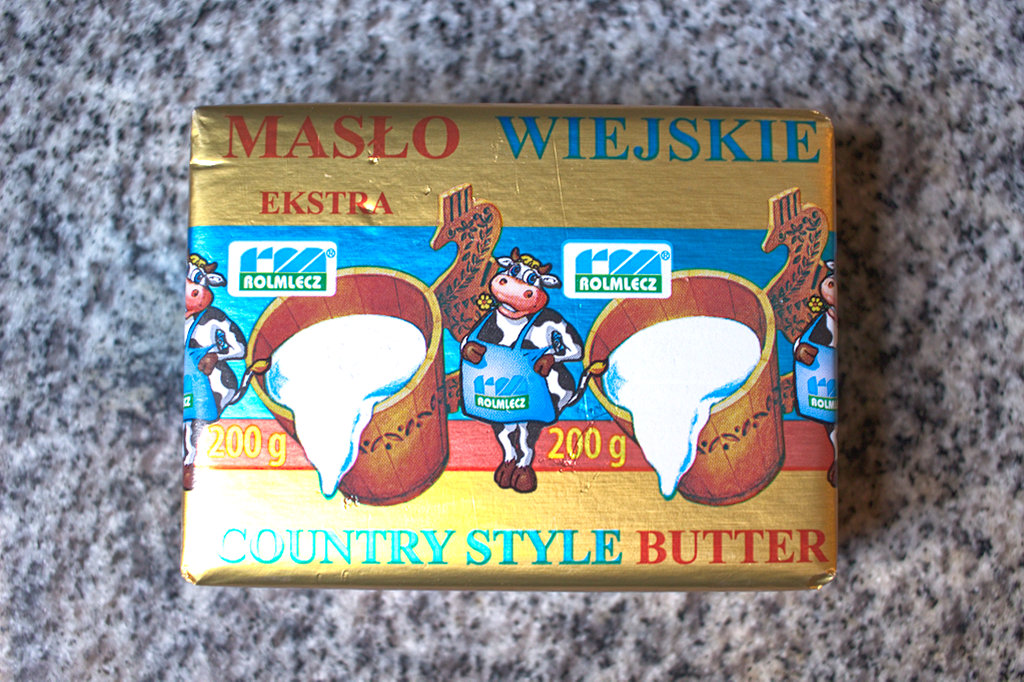
The one puzzling question I still had was what cheese to use? The cheese they used at Lassak appeared to be mozzarella, but I’ve seen recipes calling for cheddar, Swiss, Gouda, and all manner of other cheeses. The Polish recipes that I tracked down online and translated mostly just called for żółtym serem or “yellow cheese.”
So I did what any sensible person would do. I asked the next Polish person I spoke to what the right cheese for a Zapiekanka would be. As it happened, that person was a garrulous colleague I ended up on a teleconference with, and he was only too happy to give me his opinions about Zapiekanka, Polish beers, cheeses, and delis, while his girlfriend–who he admits is the one who actually makes the Zapiekanka in the house–shouted contradictory advice from the next room. Eventually I was able to gather that Królewski, or “Royal” cheese, a semi-hard yellow cheese similar to Emmental, would be an appropriate and authentic choice, though she mostly just used cheddar.
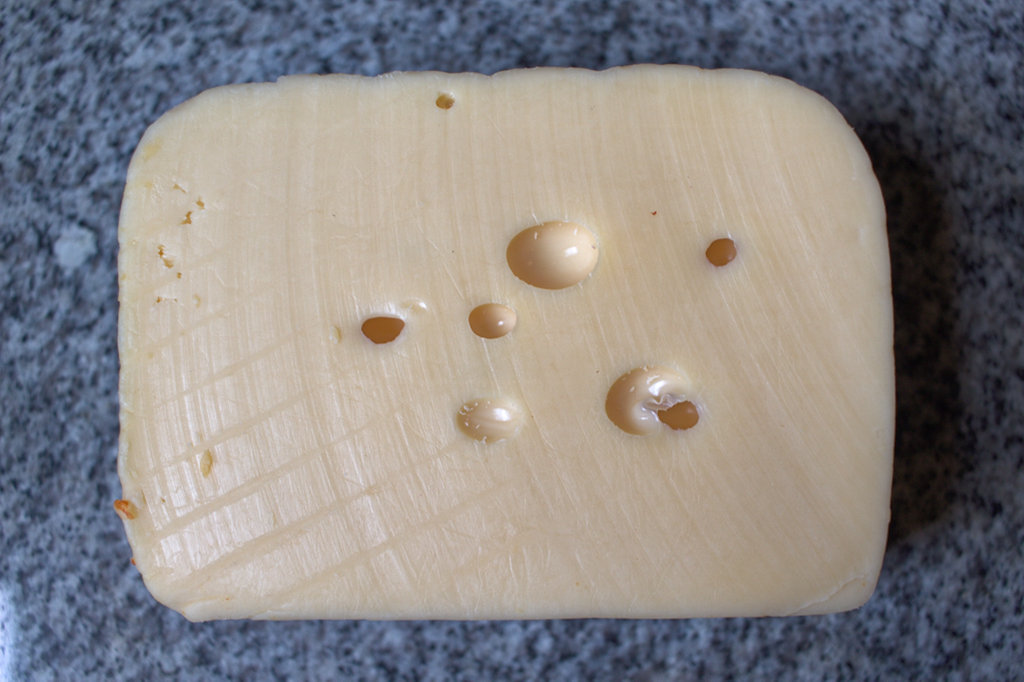
To prepare the mushrooms, I cut them into roughly 1/4″ dice, chopped up an onion, sliced a shallot nice and thin, and minced a few cloves of garlic. I sauteed the allium mix first in a little of the butter, then added the mushrooms and cooked long enough to reduce most of the liquid.
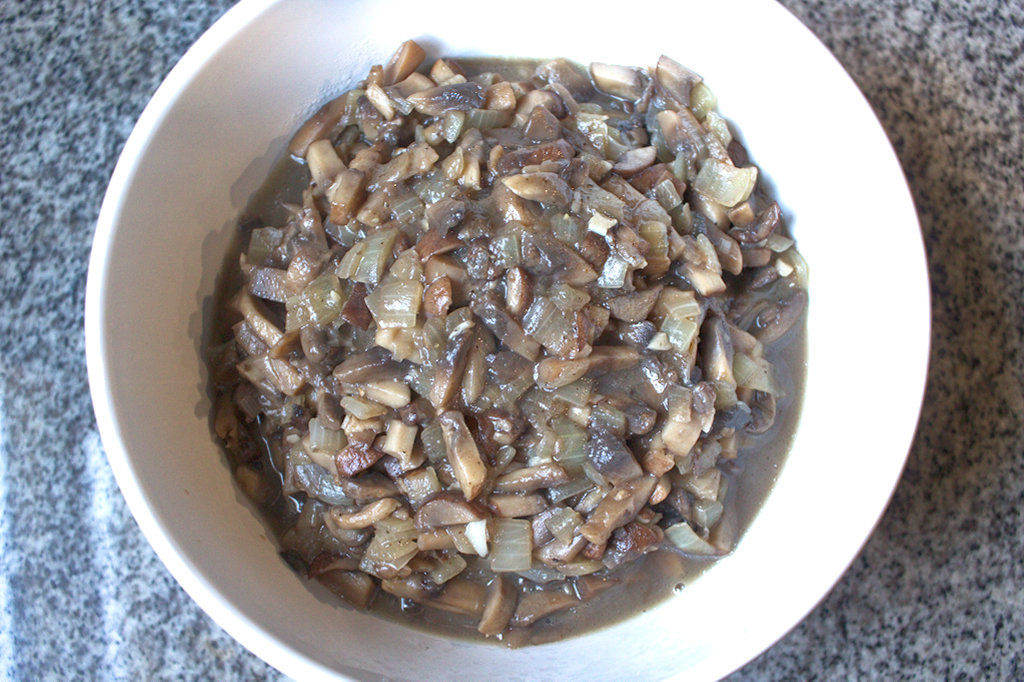
I started with the narrower, crustier French baguette. I cut it in half and buttered both sides.
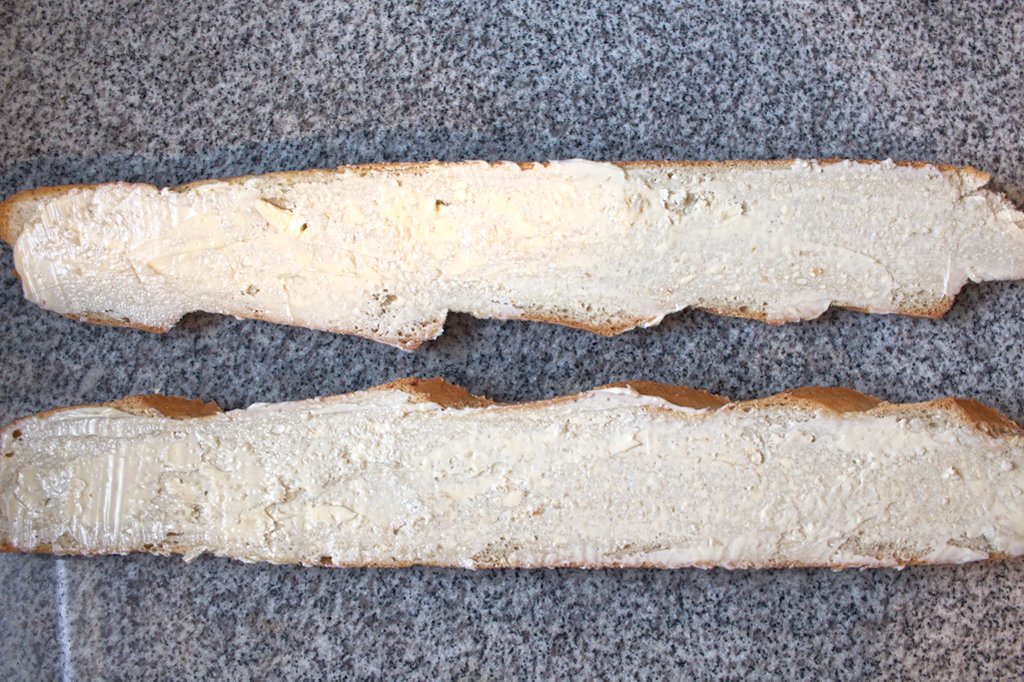
I used half of this baguette to make a plain mushroom Zapiekanka, and the other half to do another classic, mushroom and ham. According to my friend, the ham is added first, which makes sense to me, as it helps protect the bread from the mushroom liquid.
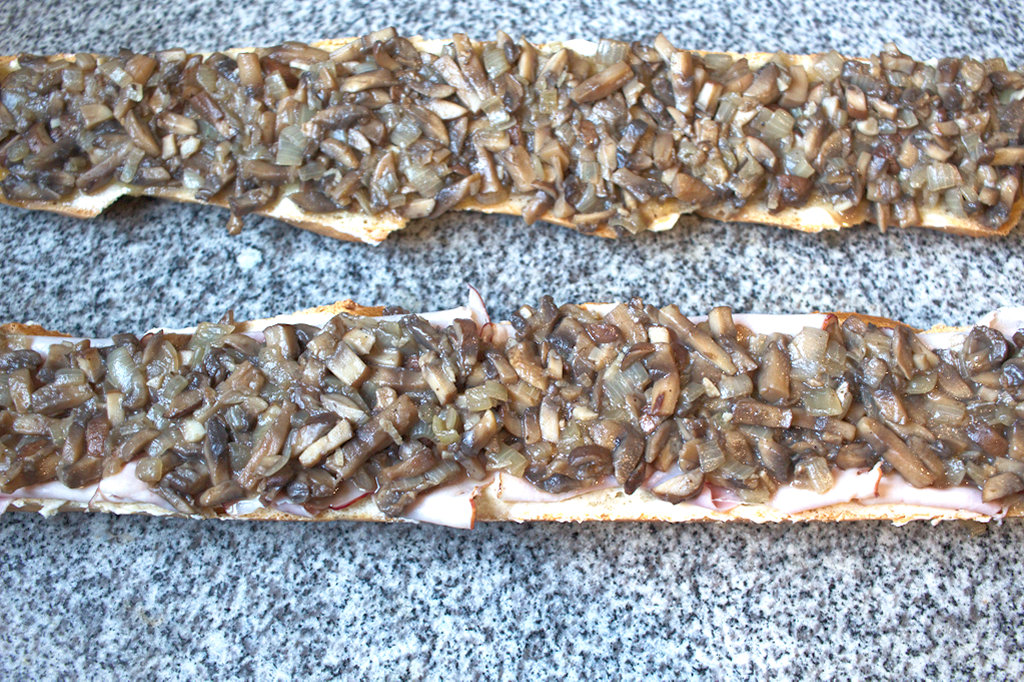
One thing I discovered making these is that the top halves of baguettes don’t like to sit flat. No matter how neatly you’ve sliced the bread, that top half is uneven from the slashes and oven spring and wants to tip over and dump all your cheese off.
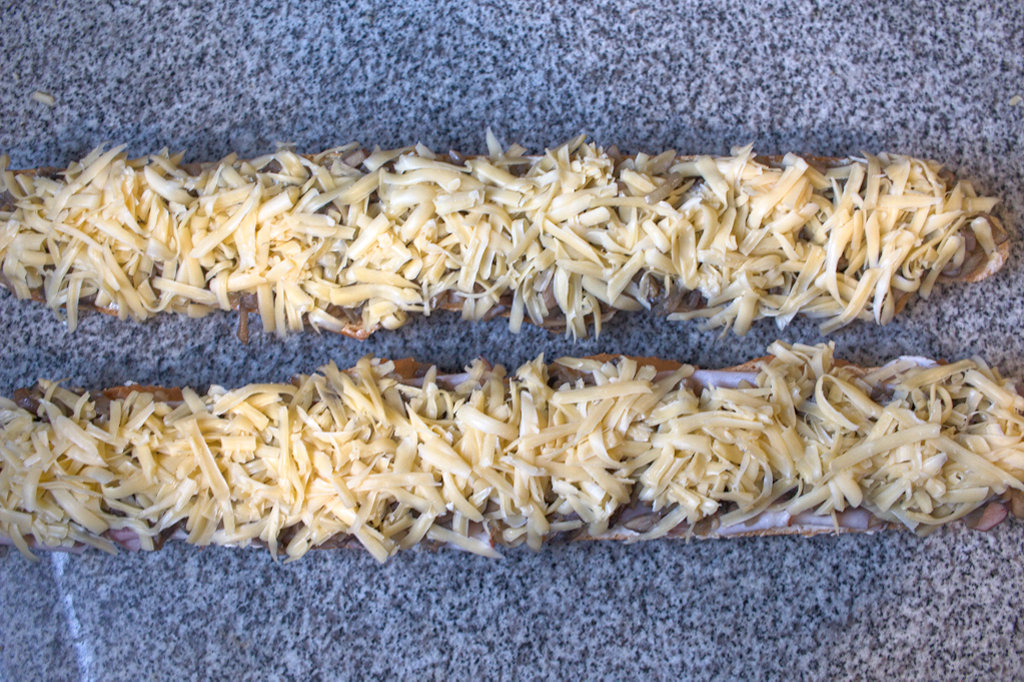
With the softer Polish bread, I used the bottom half to make a simpler, ham-only Zapiekanka for those in the family less enamored of mushrooms. Then I used the top half to go a little crazy and add both ham and kielbasa to the remaining mushrooms.
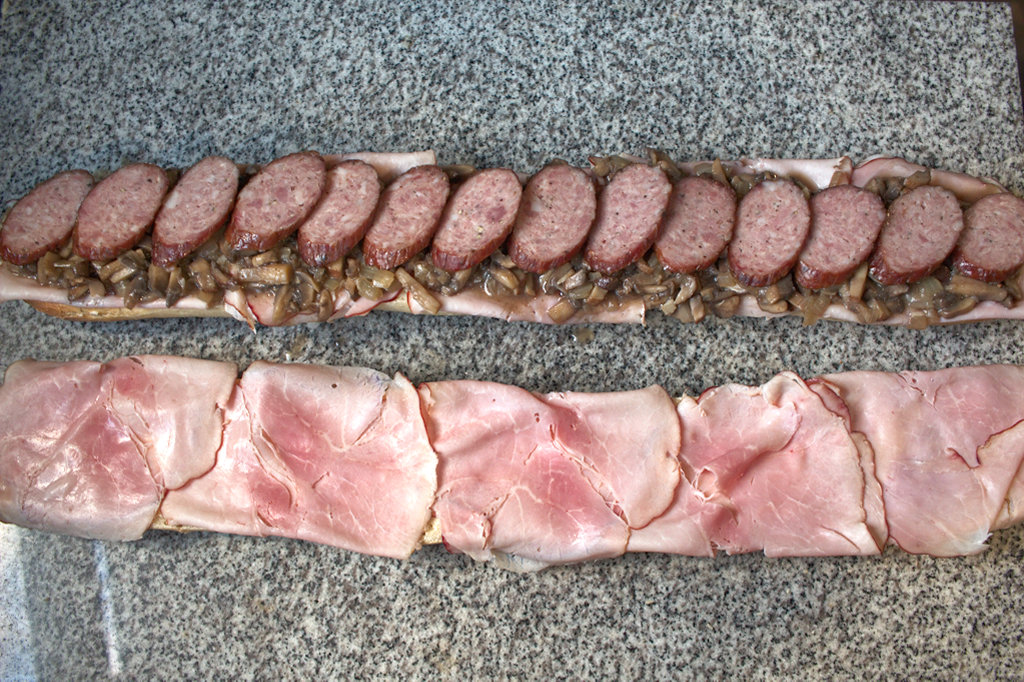
I had to bake these in shifts, as only two of them would fit in the oven at a time. To cook the Zapiekanka, I put them on put them on top of the broiler pan in the upper middle position in the oven and baked them for 12 or so minutes at 350°F before finishing them under the broiler for a few minutes. It is an inexact science.
First out of the oven were the mushroom and ham/mushroom Zapiekanka, which I dressed with the Polish ketchup and chopped scallions.

Ham and mushroom Zapiekanka 
Mushroom Zapiekanka 
Ham and mushroom Zapiekanka
While the second set of Zapiekanka were baking, I started setting up my tasting. My initial thought was to pair the Zapiekanka with each of these beers and judge which of them worked best.
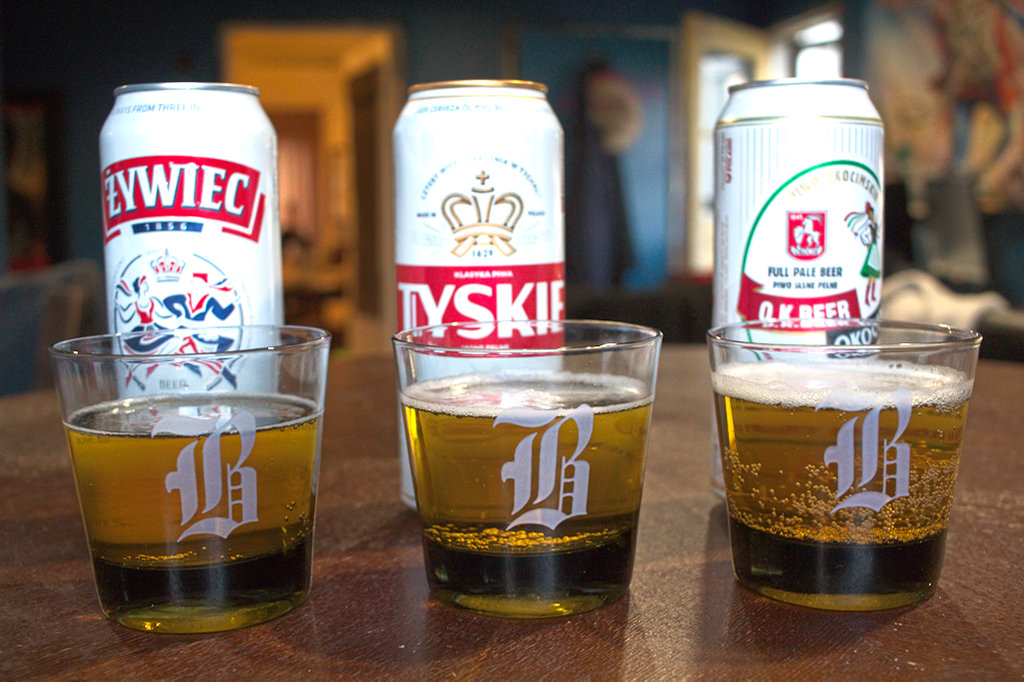
But in the chaos of running back and forth to the oven, taking a bite of Zapiekanka here and a sip of Okocim there, I found that whichever beer ended up in my hand made me happy. The Okocim was the most approachable of the three, with a light body and an equally light hop bitterness. The Tyskie was also somewhat light-bodied, but with a bolder Saaz hop spiciness. Zywiec had a similar level of hops to Tyskie, but was maltier and had a higher alcohol content.

Eventually the other Zapiekanki came out of the oven, but between the first batch and the beers I was already feeling somewhat full. I felt obligated to at least cut myself a piece of the ham, mushroom, and kielbasa Zapiekanka, but I didn’t get very far into it.
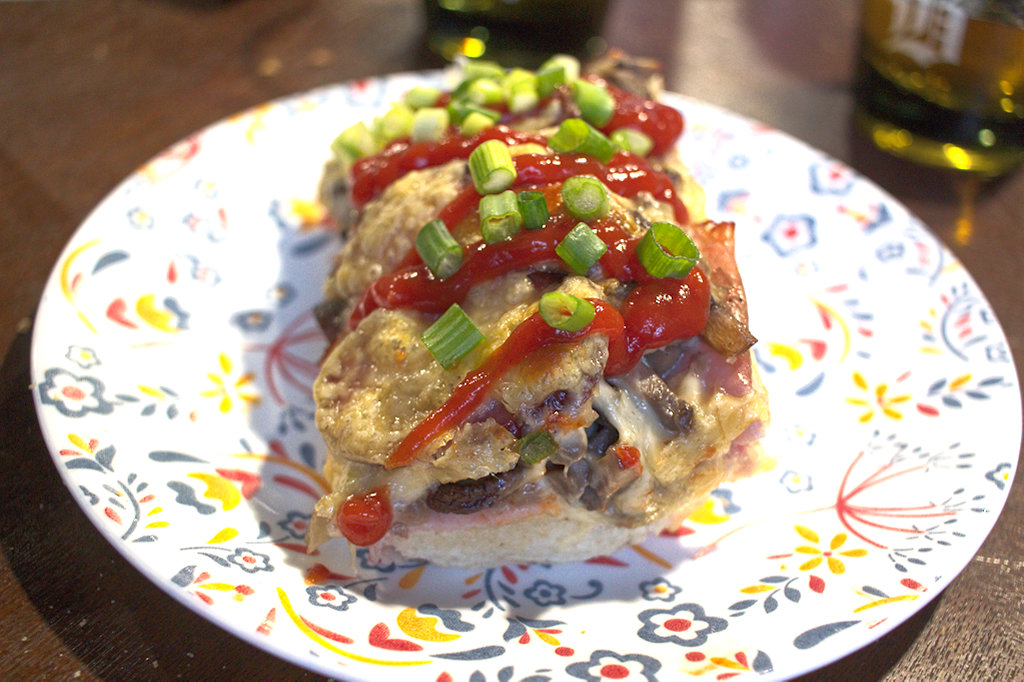
I did finish the beers though.

I like sandwiches.
I like a lot of other things too but sandwiches are pretty great


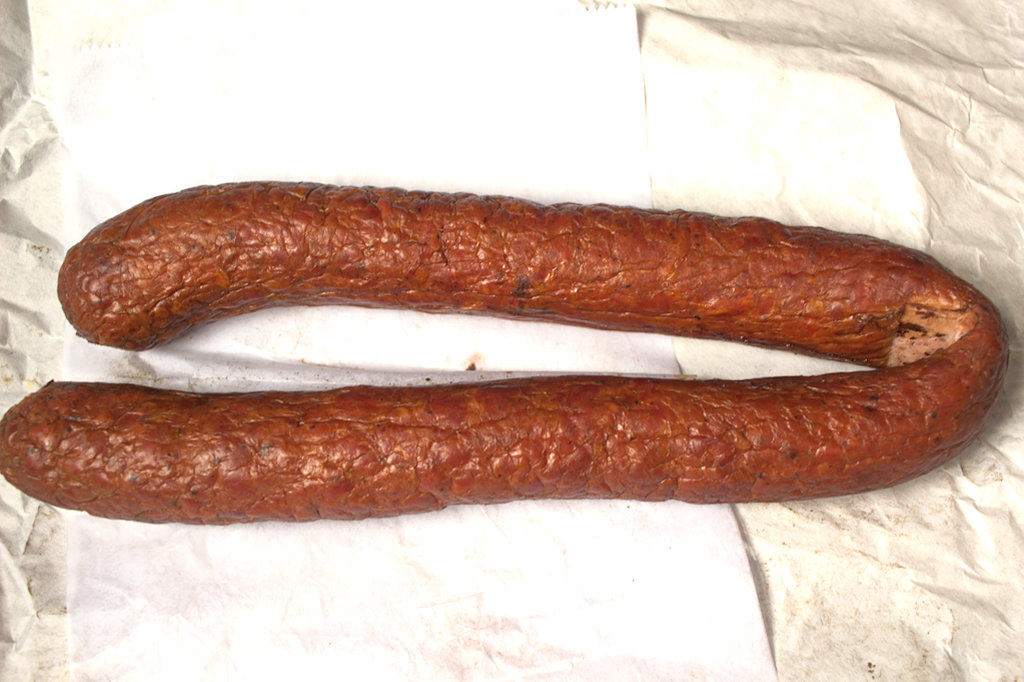
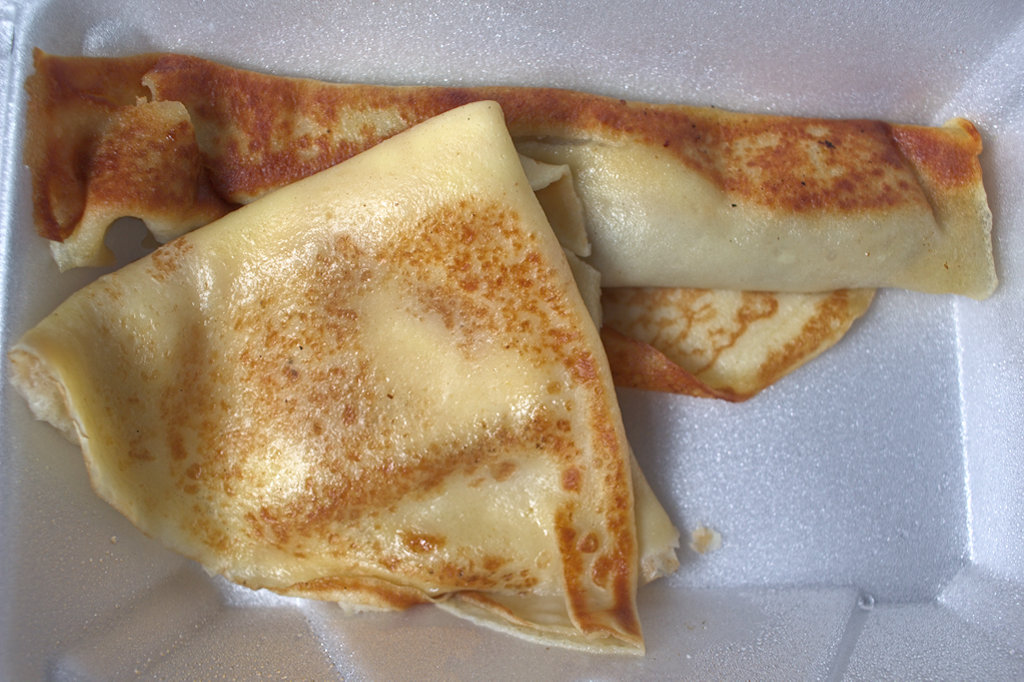
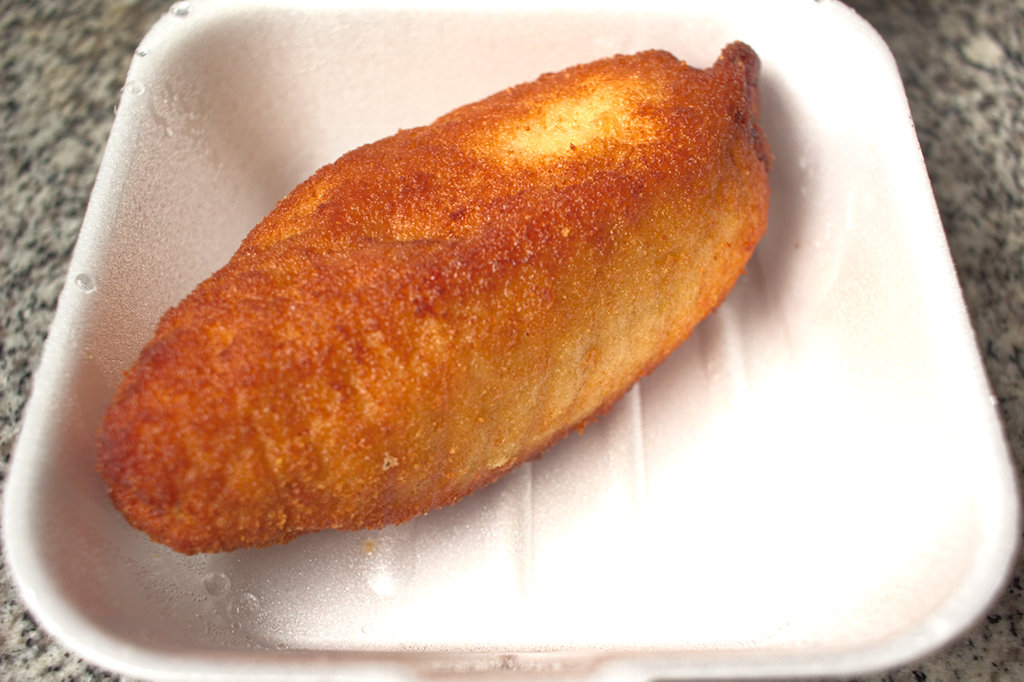
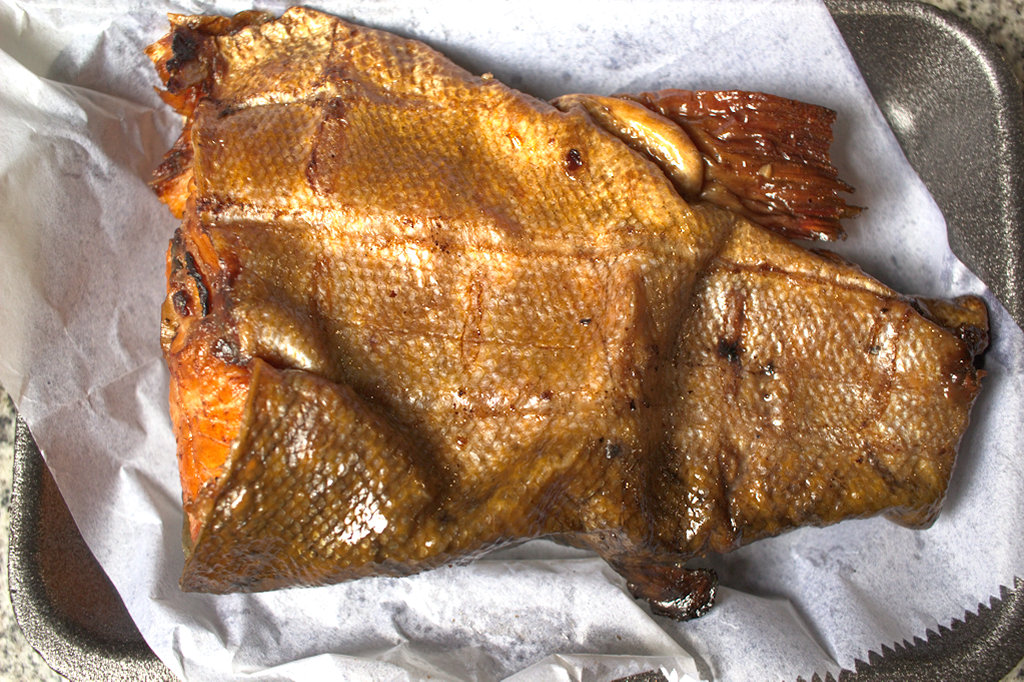
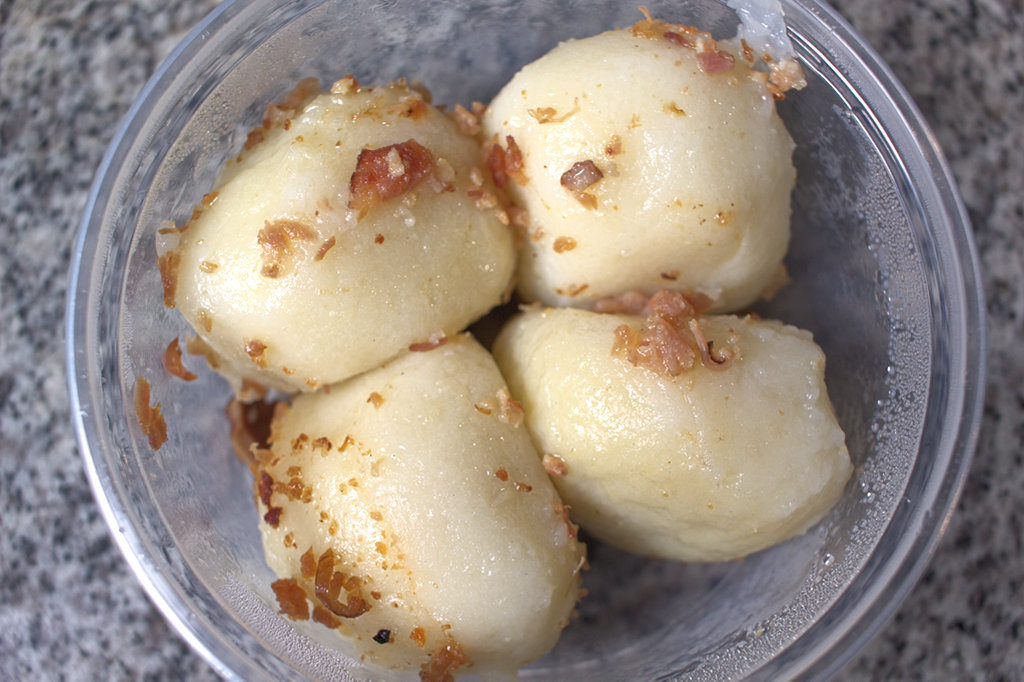







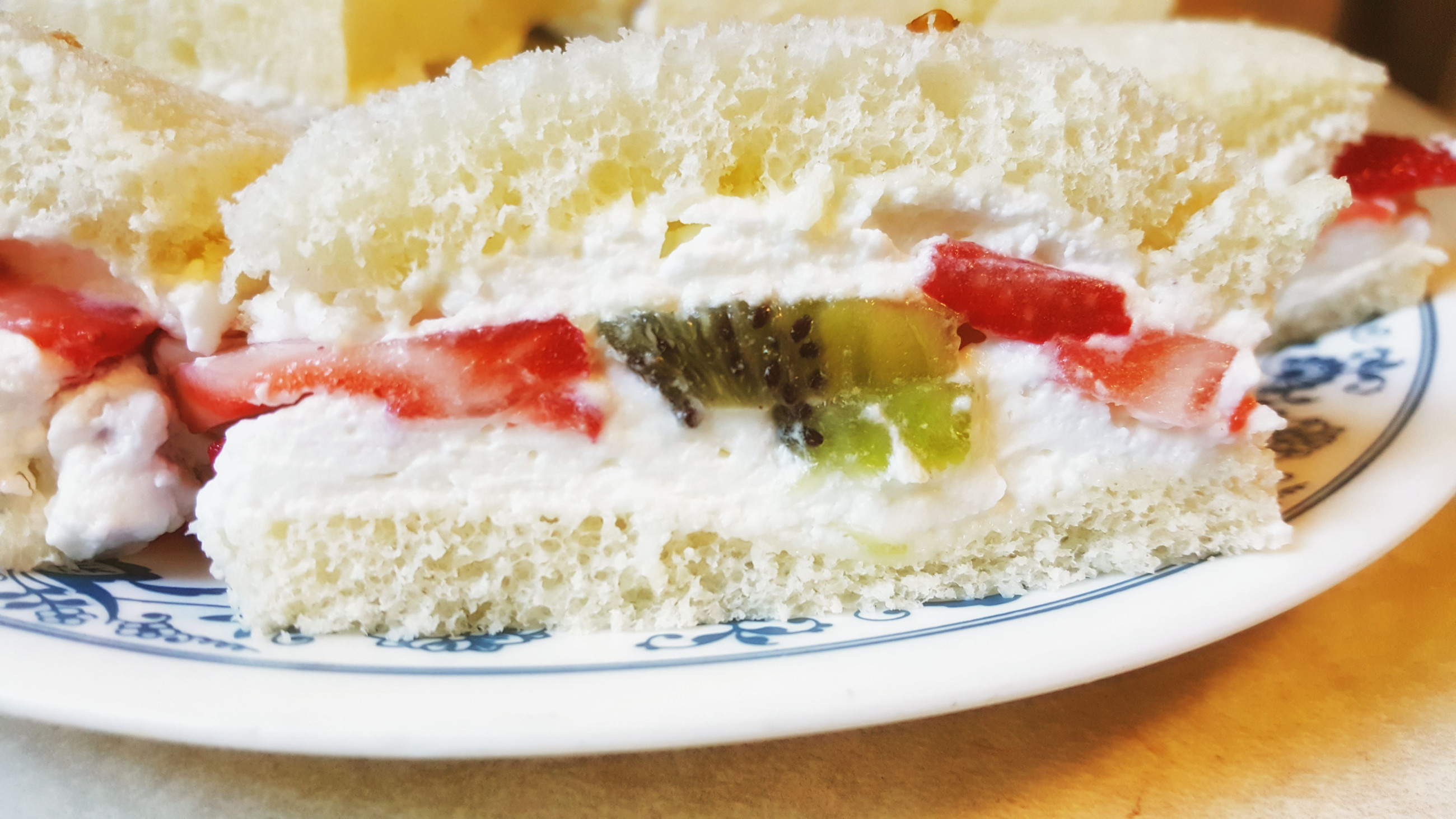






Recent Comments